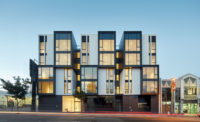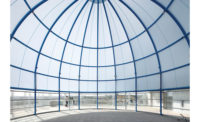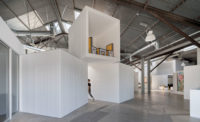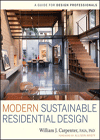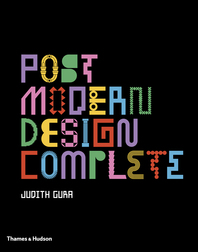“We don’t subscribe to the religion of minimalism, but we look for a certain nudity,” say Stéphanie Bru, 42, and Alexandre Theriot, 43, of Parisian firm Bruther. “Architecture is what remains when you get rid of the superfluous.” Since founding their office in 2007, the husband-and-wife team—who cut their teeth working for French architect Jacques Ferrier—has completed a handful of projects that, while seemingly reducing architecture to a sort of degree zero, are rich with idiosyncrasies and highly personal quirks. Take their most recently inaugurated building (the first competition they won, which took eight years to build), an ensemble of 25 social-housing units in Paris’s 20th arrondissement. Although it is essentially a stack of very thin concrete floors wrapped entirely in aluminum-framed glazing (could one get less expressive?), it provides a multitude of spatial experiences, thanks to the architects’ clever manipulation of the code requirements, on an irregularly shaped hillside site. Subtle detailing of the concrete frame (beams and columns don’t quite meet where you would expect) and of the envelope—the all-glass pivoting shutters on the entrance facade, for example—further complexify the “nudity,” but without becoming trivial or loquacious.
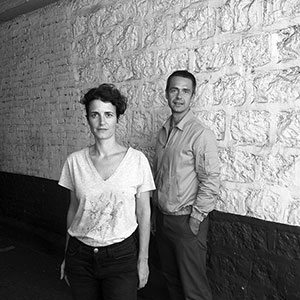
Bruther first came to attention with the Cultural and Sport Center Saint-Blaise, again in Paris’s 20th, which was completed in 2014. Here, in a compact volume that both maximizes precious space and respects its neighbors’ sight lines, the architects stacked glazing-wrapped column-free floors, on top of which perches the unglazed sports hall. Once again, subtle touches—the facades’ slight curvature or the care with which a cinder block wall was laid—bring richness and nobility to the pared-back response to the brief. For the firm’s next completed project, Le Dôme, in Caen—a fab lab and research center—Bruther faced the challenge of building the same floor area as at Saint-Blaise for half the cost. While the basic approach is similar, the materials are much cheaper—ETFE cushions and corrugated polycarbonate on the facade—and finishes left expressively rough. Despite the constraints, the architects still managed to include extra space that was not requested in the brief, in the form of the canvas-covered rooftop dome (hence the building’s nickname), which is used for temporary events.
Bruther’s work might usefully be classified as “austerity architecture,” an approach pioneered in France by Lacaton & Vassal that seeks to rescue the legacy of Modernism from its big-business corporate excesses and restore it to something of its initial social purpose, in the context of the post-2008 economic climate. Among Bruther’s other key projects are a characteristically nude residence hall at Paris’s Cité Internationale (“We don’t really like the domestic touch, little windows and all that”) and a forthcoming large lab-and-classroom building for the École polytechnique fédérale de Lausanne in Switzerland, their first built work outside France.
Bruther was founded in the wake of a six-month trip to Japan in 2006, which proved revelatory for both partners. Afterward, they say, it was a case “of unlearning what we’d learned in practice while working for others.” It remains to be seen what further refinements they will bring to an approach that they sum up as “a culture of the open plan, with the structure dissociated, and the demonstration that you can be thermally efficient while still maintaining transparency. All of our buildings,” they conclude, “are both stripped and expressive.”
Bruther
FOUNDED: 2007
DESIGN STAFF: 12-15
PRINCIPALS: Stéphanie Bru, Alexandre Theriot
EDUCATION: Bru: Paris Belleville School of Architecture, B.Arch., 1999; Theriot: Marne-la-Vallée School of Architecture, B.Arch., 1999
WORK HISTORY: Bru and Theriot: Jacques Ferrier Architecture, 2001–07
KEY COMPLETED PROJECTS: Cité Internationale de Paris, 2017; Plein Ciel housing conversion, Mérigniac, 2017; research and innovation center, Caen, 2015; Cultural and Sport Center Saint-Blaise, Paris, 2014; multiunit housing, Limeil- Brévannes, 2013 (all in France)
KEY CURRENT PROJECTS: Adaptable multiunit housing, Eysines, France; student housing and reversible parking lot, Palaiseau, France; EPFL Building, Lausanne, Switzerland







